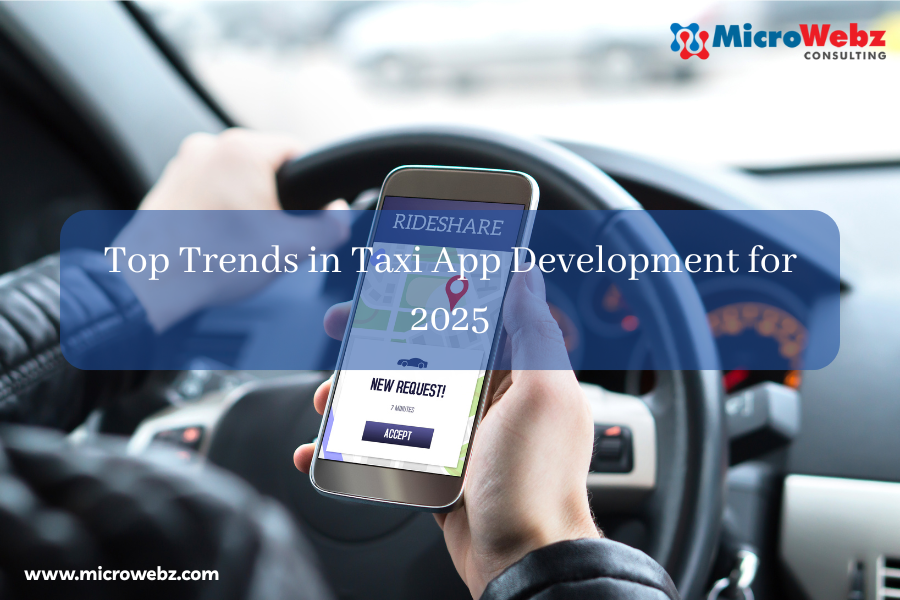
Top Trends in Taxi App Development for 2025
The ride-hailing industry is evolving at lightning speed, and taxi app development is at the heart of this transformation. As we enter 2025, businesses and developers are pushing beyond basic functionalities to build smart, scalable, and sustainable taxi apps. If you're planning to develop a taxi booking app or upgrade an existing one, staying ahead of these trends is crucial.
Here are the top trends shaping taxi app development in 2025:
1. AI-Powered Route Optimization & Smart Matching
Artificial Intelligence (AI) is playing a major role in real-time route optimization, demand prediction, and driver-passenger matching. AI algorithms analyze traffic patterns, weather, and ride history to provide faster and more efficient routes, reduce idle time, and improve ride allocation accuracy.
2. Integration with Electric Vehicles (EVs)
As the world shifts towards sustainability, taxi apps are increasingly incorporating EV-specific features such as:
- EV charging station locators for drivers
- Battery monitoring alerts
- Ride preferences for green or eco-friendly rides
Startups and taxi fleets are investing in electric vehicles, and apps are evolving to support this ecosystem.
3. Enhanced Safety Features
User safety is now a core feature, not a bonus. Apps are integrating:
- Real-time trip sharing with emergency contacts
- SOS buttons with direct police/helpline integration
- In-app audio/video recording during rides
- Background checks and live driver status tracking
Passenger trust is key to brand loyalty.
4. Contactless and Multi-Mode Payment Options
With growing emphasis on digital and contactless payments, taxi apps now support:
- UPI, digital wallets, and QR codes
- One-tap payment via NFC
- Ride now, pay later (BNPL) options
- Crypto payments (early-stage)
Multiple payment integrations create smoother user experiences.
5. Multi-Modal Mobility Integration
Users don’t just want taxis—they want convenience. Apps are integrating options like:
- Bike taxis
- Auto rickshaws
- Shuttle and carpooling services
- Metro and bus info
This trend supports smart city and mobility-as-a-service (MaaS) initiatives.
6. Voice Search & Booking with AI Assistants
With smart devices and voice technology on the rise, users are now booking rides using voice commands via:
- Google Assistant
- Siri
- Alexa
Voice-based UX is becoming a key competitive advantage.
7. Subscription & Loyalty Models
Taxi apps are adopting pricing models that offer:
- Ride passes (e.g., 10 rides/month at a fixed price)
- Loyalty rewards and cashback systems
- Corporate ride plans with discounts
These models enhance retention and encourage frequent usage.
8. Super App Evolution
In many regions (especially Asia), taxi apps are evolving into super apps offering:
- Food delivery
- Parcel services
- Bill payments
- Micro-financing
Integrating multiple services under one umbrella boosts engagement and revenue.
9. Modular and Scalable Architecture
Modern taxi apps are being built with modular microservices architecture to:
- Scale easily across geographies
- Customize features for different regions
- Ensure smooth maintenance and updates
This enables faster go-to-market and better performance.
10. Hyperlocal & Regional Customization
Taxi apps are adapting to local languages, regulations, and cultural needs. Features like:
- Local language support
- Regional driver onboarding flows
- Localized pricing and rules
Final Thoughts
2025 is shaping up to be a year of innovation, personalization, and sustainability in taxi app development. Whether you're a startup or an established business, embracing these trends will give you a competitive edge and help build a future-ready taxi app that delights users and drives growth.






.png)
.png)
.png)
